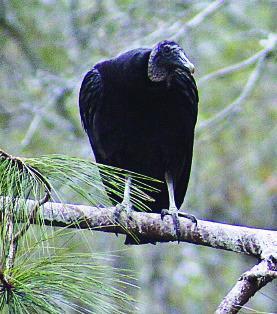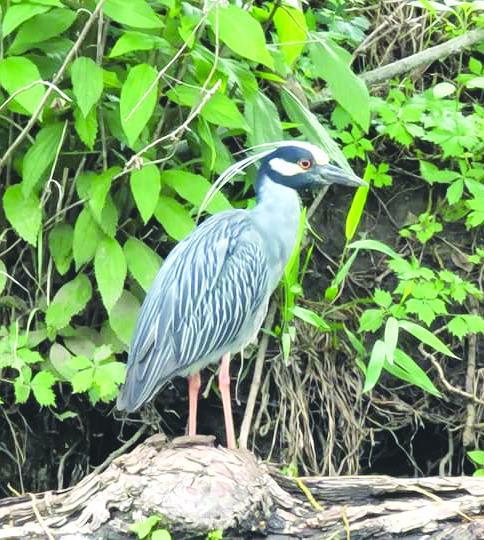
Our resident “ugly bird” the vulture might find itself in good company with the African spoonbill.
Photo from Metro Creative

By contrast, one of our local “beautiful birds,” the yellow-crowned night heron can be seen around the San Marcos River.
Photo by Jason Cook

Exploring Nature: Ugly Bird, Beautiful Bird
Not all birds are beautiful.
A few are downright ugly, and one of the ugliest I’ve ever seen is the shoebill stork. I saw this bird in Africa and was impressed by its prehistoric appearance — huge, brown-stained beak and hulking, five-foot tall body on thin black legs. It reminded me a bit of the wood stork, but with a double dose of ugliness.
The shoebill’s beady eyes don’t help its overall appearance, and its communication skills consist of hisses and a gurgly barking sound.
It has been described as the dinosaur of birds, weighs about 12 pounds and has an eight-foot wingspan. It is a member of the pelican family and is related more to herons than to other storks.
Some folks say the shoebill reminds them of a black-clad undertaker. Certainly, it is not considered a pretty specimen. (However, so long as the male and female birds are mutually attracted, things should be just dandy in shoebill country.)
Conversely, probably one of the most beautiful birds I have seen is the resplendent quetzal. What a well-named bird; it is truly resplendent. It is also the national bird of Guatemala, which is where I saw it. That country’s paper currency is called the quetzal, and the bird is on the country’s flag and coat of arms.
The quetzal’s bright coloration of turquoise, green and white with just a dash of red makes for a lovely combination. About three feet long, the bird’s tail feathers stream an additional three feet. The tail floats and quivers as the quetzal flies about, a most enchanting sight to behold.
Ancient Mayans actually used quetzal feathers as their currency. The country’s rulers also used the feathers to make luxuri-ous cloaks for royal use.
The male quetzal is the showy bird, with its fabulously long tail and bright colors; the female is a relatively drab gray color.
Hulking shoebills and beautiful quetzals: The contrast is seismic and the two species are worlds apart in appearance. But both are interesting avian species, and I’m very happy to have made their acquaintance.











